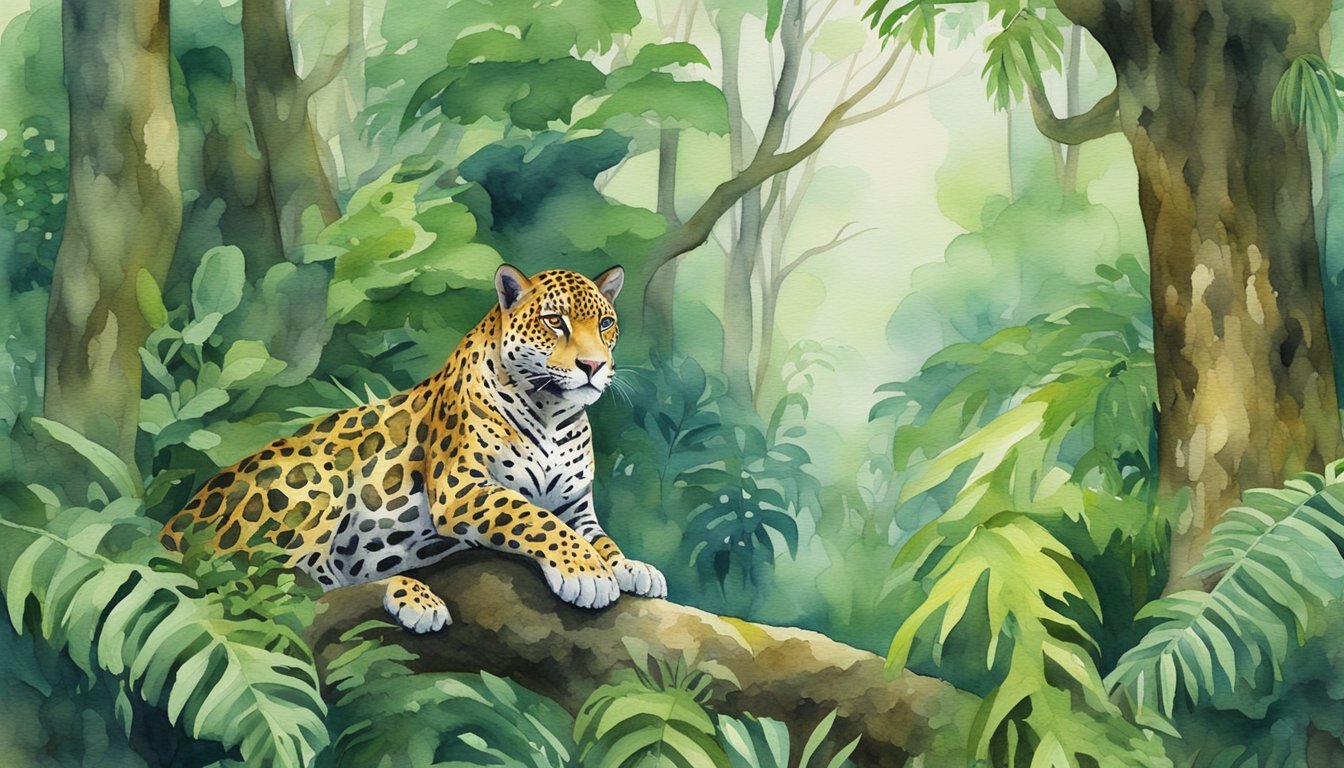Physical Characteristics and Behavior
The jaguar is an impressive big cat known for its powerful build and beautiful spotted coat. With a combination of strength, agility, and a distinctive pattern of rosettes, the jaguar’s physical characteristics are perfectly adapted for a life of predation in diverse habitats.
Morphology and Identification
Jaguars are robust and muscular animals, and they possess the strongest bite of all big cats relative to their size. Their size is notable; adults can range from 1.62 to 1.83 meters in length. The jaguar’s coat is typically a tan or orange hue background covered in black spots and larger rosettes with spots inside, which aid in camouflage.
- Average length: 1.62 – 1.83 meters (5.3 – 6 feet)
- Shoulder height: Up to 75 centimeters
- Weight: Between 68 and 136 kilograms
These big cats are immediately identifiable by their unique coat pattern, with each individual jaguar having a different spot pattern. This distinguishes them not only from other animals but also from each other.
Diet and Hunting Tactics
Jaguars are obligate carnivores, and they employ stealth and their remarkable strength to hunt a variety of prey. They inhabit diverse environments and are known for their ability to adapt their diet accordingly. Jaguars have a powerful bite that can easily puncture shells and skulls, allowing them to prey on turtles, caimans, and even large mammals.
- Preys on: Fish, turtles, caimans, and large mammals
- Hunting technique: Stealth and a powerful bite
Jaguars are most active at dawn and dusk, often utilising the cover of the dense forest to approach prey quietly before delivering a fatal bite, usually to the head or neck. They use their teeth and strength to subdue and kill the animals they hunt, showcasing their role as apex predators within their ecosystem.
Habitat and Conservation

Jaguars thrive in various ecosystems, from the rainforests of South America to the swamps of Central America. Their survival, however, is jeopardized by increasing threats that demand urgent conservation measures.
Geographical Range and Ecosystem
The jaguar (Panthera onca), the largest cat of the Americas, primarily inhabits the forests of South America, particularly within the bounds of the Amazon rainforest. Their territory also extends into the grasslands and swamps of Argentina and through the dense forests and wetlands of Central America and Mexico. They prefer environments close to water sources such as rivers, and their broad territorial range has them roaming lands that are essential to their hunting and breeding habits.
Threats and Preservation Efforts
Jaguars face a range of threats which has led the IUCN Red List to categorize them as near threatened. Deforestation and habitat fragmentation are severing the corridors these cats use to travel and hunt, while poaching and the illegal trade of jaguar parts severely impact jaguar populations. Conservation units and efforts such as those initiated in the Cockscomb Basin Wildlife Sanctuary are critical in safeguarding the remaining populations. Targeted protection and anti-poaching measures, along with efforts to maintain and restore their habitats, are needed to ensure that jaguar numbers remain stable or increase.

